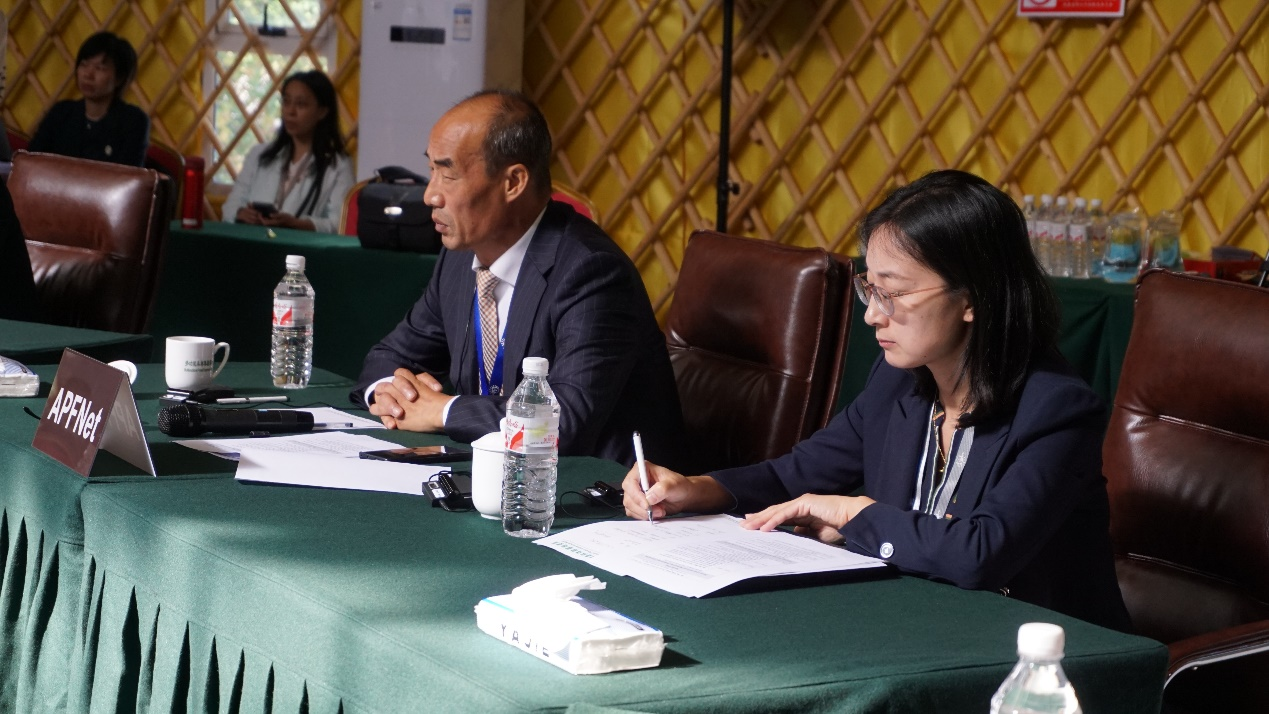
The Third Meeting of Ministers Responsible for Forestry in Greater Central Asia was held from 11-14 September 2023, in Chifeng, China, and attended by ministerial and high-level officials from China, Kyrgyzstan, Mongolia, Tajikistan, Turkmenistan, and Uzbekistan in charge of forestry developments.

Around the theme of “Strengthening Forestry Cooperation and Promoting Regional Development”, representatives shared their latest developments in laws and policies, priorities, actions, accomplishments, challenges and gaps, as well as fields where regional exchanges and cooperations are urgently needed.

The keynote presentations established a solid base for later consultations on how regional cooperations would be focusing and promising for several years to come.

China shared its actions and astonishing achievements in the National Land Greening Initiative and desertification prevention and control. Experiences include (1) strong political willingness and alignment in actions. (2) systemized laws and regulations, (3) policies cover and direct responsible agencies at various levels (4) resources invested in ecosystems are ensured. (5) programs must be able to incent participants and contribute to poverty reduction and livelihood improvements.

Kyrgyzstan shared its remarkable achievements of forest cover increase by 3.37% to 6.28%, as of 2022 inventory data, after severed deforestation during 1930s-1960s and forest loss of 5.74 million hectares. 4 priorities for forestry developments are to (1) increase forests’ contribution to national GDP, (2) reduce poverty in the agricultural population, (3) increase forest cover by 10%, and (4) reform forestry with advanced techniques. To restore forest ecosystems, great efforts have been made on nursery establishment, seedling production, as well as forest plantation sites, which would also contribute to the national long-term goals related to climate change mitigation and emission reduction.

Mongolia introduced its efforts in reforestation since 1970s, with a 200,000-ha area afforested, 535,000-ha degraded area reforested, and 1.2 million ha degraded forests naturally regenerated. While gaps remain in policies, planning, resources, personnel capacity, and so on, the Government has set Vision 2050, the national long-term development goals, to boost green development and ecosystem restoration. The Billion Trees movement is an excellent example of encouraging and incentivizing individuals and enterprises to contribute to increasing forest cover, decreasing severely desertified areas, and responding to climate change.

Tajikistan’s presentation focused on its forestry strategy development, with objectives related to biodiversity, forest restoration, forest cover and productivity, ecosystem service enhancement, entrepreneurs’ engagements in forests and forestry, engagement of the public, women, and local communities to forest management for better livelihoods, and fulfillment of international obligations. To achieve these, priorities fall on (1) institutional reforms and funding mechanisms in the sector, (2) protecting and increasing forests by promoting cash trees, participatory forest management, and ecotourism, etc. (3) consolidating the basis for forestry by promoting seedling production and nursery establishment, enhancing management, budgeting and monitoring, capacity building, and technology reforms.

80% of Turkmenistan’s land is desert. The National Forest Plan 2021-2025 has set goals for creating an environmentally friendly environment, reforestation and biodiversity conservation, sustainable forest management, conducting research, strengthening legislative frameworks, and international cooperation. Major actions include forest park establishment, protective forest belt formation, landscape improvement of the national tourist area "Avaza", seed harvesting, seedling production, rare plant cultivation, reforestation in areas affected by the Aral Sea, documentation normalization, and forest inventory and monitoring. Delightful progress has been achieved with measurable and visible evidence.

Uzbekistan emphasized its commitment to responding to the Bonn Challenge, by restoring 500,000-ha forested land. To fight desertification, actions have been taken to increase the area of afforestation and survival rates, and progress seems promising. Cooperation with communities and NGOs has created programs of forest restoration and business development, which provide jobs and contribute to sustainable economic development.
Inner Mongolia as host of the meeting shared experience in decade-long efforts in ecological restoration.


The meeting was concluded with the Action Plan for Greater Central Asia Forestry Cooperation Mechanism (2023-2025) adopted, with priorities set forth as follows:
· Vegetation restoration in arid and semi-arid areas,
· Sand-based industry development in the areas affected by desertification, such as agroforestry, pasture and ecotourism, etc.,
· Transboundary cooperation on forest/ grasslands fire prevention and control,
· Conservation and utilization of forest/grasslands genetic resources,
· Promoting capacity building of forestry/grasslands professionals,
· Promoting forestry/grassland scientific research cooperation and exchange,
· Improving the livelihood of the communities in extremely decertified areas by transforming the areas into pastures dotted by clusters of shrubs.
APFNet will continually support regional cooperation with its four implementation tools of policy dialogues, capacity building, demonstration projects, and information sharing.
The meeting also appreciated the offer of Mongolia to host the fourth meeting and decided so.

The meeting featured a series of project site visits before and after the indoor session. Representatives went to a larch plantation site for seed cultivation and timber harvesting, an understory mushroom production base, a Larch plantation site for large-diameter timber cultivation, and the program sites of desertification control, where representatives planted memorial trees.
